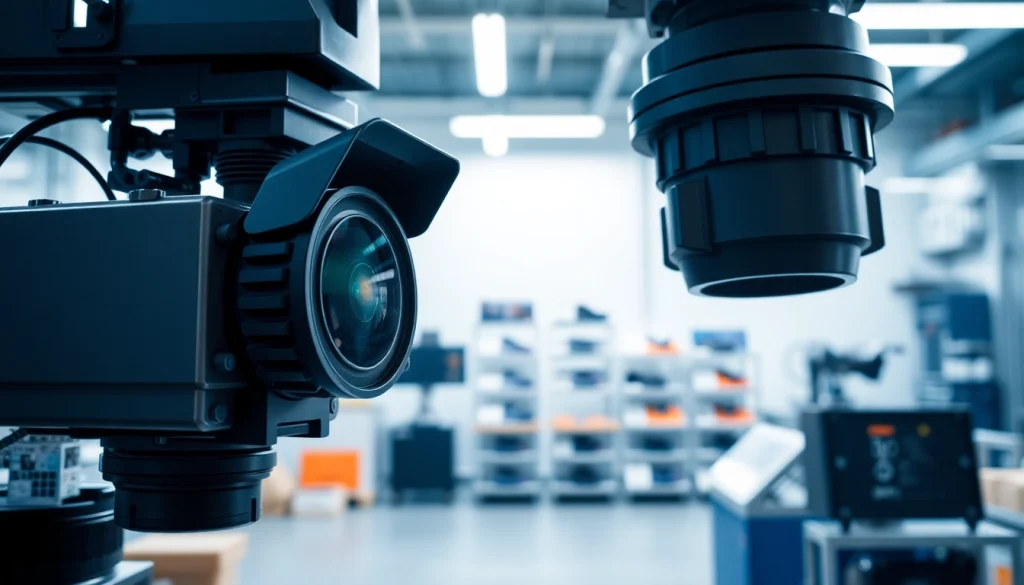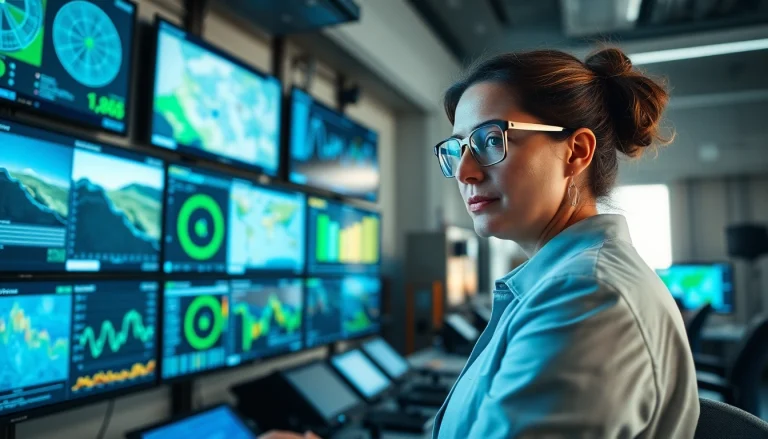
What is Machine Vision?
Machine vision is a transformative technology that equips machines with the capability to see, analyze, and interpret visual data. By integrating advanced imaging technologies and processing algorithms, machine vision enables automated inspection, guidance, and decision-making in various environments ranging from manufacturing to healthcare. This technology has gained immense traction, thanks in large part to its ability to enhance operational efficiencies and product quality.
Definition and Core Components
Machine vision can be defined as the technology that utilizes electronic systems to capture and process images for analysis and decision-making. It comprises several core components:
- Cameras: The eyes of the system, capturing images of the object or scene under observation.
- Illumination: Proper lighting is critical for effective image capture, often using LED lights or lasers to spotlight key features.
- Processing hardware: This includes CPUs or GPUs that handle the heavy lifting of image processing tasks.
- Software algorithms: The brain of the system that analyzes captured images, identifies patterns, and makes decisions based on predefined criteria.
The Role of Hardware in Machine Vision
The hardware aspect of machine vision is foundational. Cameras are selected based on factors like resolution, speed, and type (e.g., monochrome or color). Additionally, the choice of processing units can dramatically affect the performance of a machine vision system. High-performance systems often utilize specialized hardware such as Field Programmable Gate Arrays (FPGAs) for fast image processing capabilities. Key considerations include:
- Camera resolution, affecting image clarity and detail.
- Frame rate, crucial for dynamic or high-speed applications.
- Lens types, impacting field of view and depth of focus.
- Environmental durability, requiring cameras to withstand harsh conditions in industrial settings.
Software Algorithms: The Brain Behind Machine Vision
Machine vision software harnesses complex algorithms to interpret visual data. Various techniques are employed including:
- Image processing: Tasks such as noise reduction, contrast enhancement, and edge detection.
- Pattern recognition: Identifying shapes, colors, and patterns to classify or track objects.
- Machine learning: Implementing AI to improve system performance over time by learning from data inputs.
- Statistical analysis: Evaluating data sets for quality control metrics and performance analytics.
Applications of Machine Vision
Machine vision is increasingly being adopted across a myriad of industries, each leveraging its capabilities for enhanced efficiency and quality assurance. Here are some prominent applications:
Industrial Automation and Quality Control
Industries such as automotive, electronics, and packaging utilize machine vision for quality control and automation. It can perform tasks such as:
- Defect detection: Identifying physical flaws in products.
- Verification: Ensuring components meet specifications during assembly.
- Sorting and labeling: Automating the categorization of products based on visual inspection.
Case studies have shown that companies implementing machine vision systems have reduced defect rates by up to 90%, leading to significant cost savings and improved customer satisfaction.
Machine Vision in Healthcare and Diagnostics
In healthcare, machine vision is revolutionizing diagnostics through applications such as:
- Tissue analysis: Providing high-resolution imaging for accurate pathology results.
- Radiology: Assisting radiologists by pre-analyzing scans for abnormalities.
- Robotic surgery: Enhancing precision in surgical procedures with real-time imaging feedback.
These systems not only improve accuracy but also enable faster diagnosis, allowing for timely treatment interventions.
Usage in Autonomous Vehicles and Robotics
Machine vision is integral to the development of autonomous vehicles and robotic systems, which require the ability to recognize and interpret their environment. Key applications include:
- Obstacle detection: Utilizing cameras and LIDAR to navigate environments safely.
- Traffic sign recognition: Ensuring compliance with road rules for safer driving.
- Navigation systems: Enhancing path planning for robots in warehouses and assembly lines.
The automotive industry, for example, anticipates that machine vision systems could cut accident rates significantly as automated driving becomes more prevalent.
Benefits of Implementing Machine Vision
Adopting machine vision technologies presents several compelling benefits for organizations looking to improve their operations:
Improved Accuracy and Efficiency
Machine vision systems achieve unparalleled accuracy in inspecting products, leading to fewer errors and defects. By automating repetitive tasks, they enhance efficiency, allowing employees to focus on more complex issues. A study noted a 30% increase in production speed when machine vision was integrated into quality control processes.
Cost-Effectiveness and Waste Reduction
Integrating machine vision systems not only helps in reducing defects but also decreases operational costs. The system prevents the production of defective items from the onset, saving money in wasted materials and labor costs. Furthermore, by incorporating machine vision systems, companies can expect an ROI of 20% or more within the first year.
Real-Time Monitoring and Analytics
Machine vision enables real-time data collection and analytics on production lines. This capability enhances decision-making processes as managers can promptly respond to issues. Additionally, the data gleaned from machine vision systems allows for the identification of trends and patterns, providing essential insights for continuous improvement strategies.
Challenges in Machine Vision Systems
Despite its many advantages, implementing machine vision comes with its share of challenges, necessitating careful planning and consideration.
Hardware Limitations and Environmental Factors
Machine vision systems often face limitations based on their hardware capabilities. Issues such as inadequate resolution or frame rates can hinder performance, especially in dynamic environments. Moreover, environmental factors like poor lighting or vibration can adversely affect image capture quality. Solutions may include investing in higher-quality equipment and implementing consistent lighting conditions.
Data Processing and Management Issues
A significant challenge is managing the vast amounts of data produced by machine vision systems. Organizations must ensure they have robust processing capabilities and adequate storage solutions in place. Additionally, using algorithms that can efficiently sort and analyze data will streamline the decision-making process.
Integration with Existing Technologies
Integrating machine vision with existing manufacturing systems can sometimes prove complex. Ensuring compatibility with legacy equipment and software is crucial. This can involve substantial upfront costs and requiring trained personnel to manage and maintain the system effectively.
The Future of Machine Vision Technology
As technology continues to evolve, so too does machine vision. Industry experts are optimistic about the future of these systems, predicting significant advancements in several key areas.
Emerging Trends and Innovations
We are witnessing the emergence of several trends that will shape the future landscape of machine vision, including:
- Artificial Intelligence: AI and machine learning will become more integrated into machine vision systems, enhancing their capability to learn from data inputs and improve over time.
- Edge Processing: Decentralizing data processing closer to where it is collected will enhance real-time analysis and reduce bandwidth use.
- 3D Vision: Advancements in 3D imaging will allow for more comprehensive spatial analysis of products and environments.
Impact of AI and Machine Learning on Machine Vision
The incorporation of AI in machine vision will enable systems to not only perform basic image analysis but also engage in predictive maintenance and anomaly detection. This will enhance operational efficiency as systems will identify potential issues before they escalate. Machine learning algorithms are also paving the way for greater customization in applications tailored to specific industry needs.
Predicted Market Growth and Developments
Market analysts project that the machine vision industry will experience exponential growth in the coming years, with a compound annual growth rate (CAGR) of over 10%. This is driven by the increasing adoption of automation across various sectors and the rising demand for quality assurance in manufacturing. Investments in technology will continue to foster innovation, leading to broader applications and more sophisticated machine vision systems.






